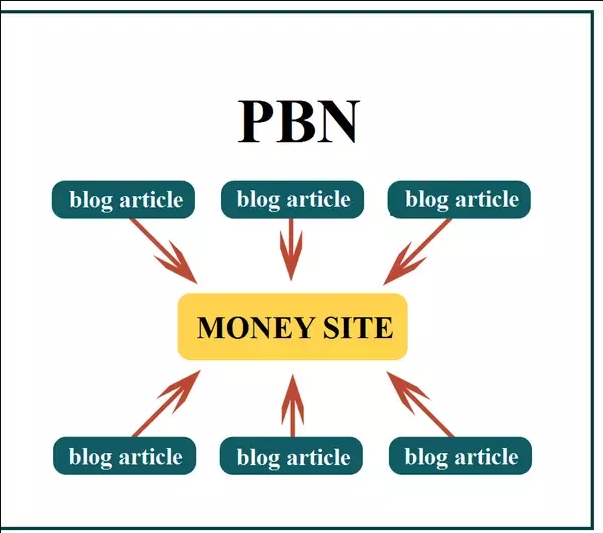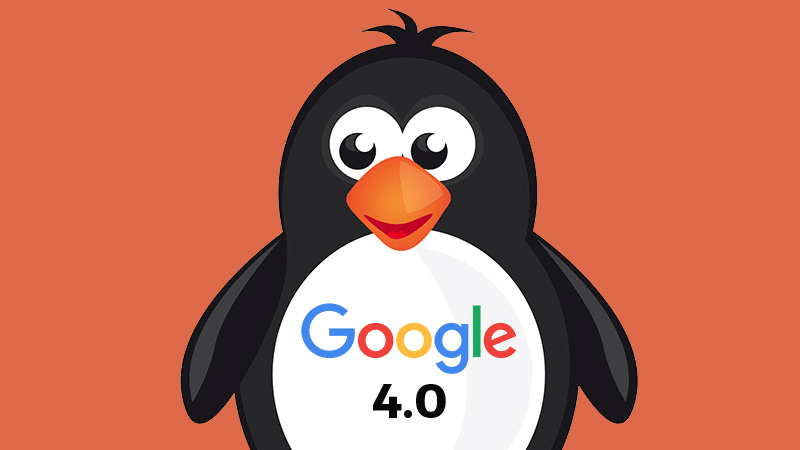The Good, the Bad and the Ugly of Buying PBN Backlinks in 2019 [QUIZ]
30 July 2019 Leave a comment LINK EARNING
Racking your brain on how to earn more backlinks? Then you might have come across PBN (Private Blog Networks) links. For now, this is one of the most controversial SEO subjects. Google officially announced penalties for using such links, but some experts still believe in the PBN power. So where’s the truth?
In this article, we’d like to eliminate prejudice and look at the concept honestly. Is it worth investing your efforts? If yes, then how to do it wisely? We’ve gathered the latest information in one place.
The Short History of PBN Backlinks
It all started when MOZ invented the domain authority metric. According to MOZ, this metric is scored from 1 to 100 and includes several factors, such as the number of backlinks or domain’s age. A complete guide on this metric you will find here.
High website’s authority is one of the huge SEO goals, so it’s not surprising that SEO experts are always seeking for new backlink sources.
At some point, the big secret on how to gain many backlinks from a high-authority website was revealed: you only have to buy expired domain names. The trick is that such domains already have a solid authority level, so the work is almost done.
When you have enough domains, the next step is to post some essential content on each website where you can also include a link to your site. This domain collection is called a private blog network (PBN).
Imagine a website database that gives you links – that is a basic PBN structure:
Does it still the same in 2019, and does it work? The answer is yes. The biggest benefit of creating PBNs is that it gives control over content and links. You can add industry-specific articles to the domains and change the anchor text in any way and any time you like.
How Many Websites Should You Include in the PBN?
The answer depends on the niche you work in:
For a small niche or a local business, you only need 5-7 websites. The competition level is usually low in these cases, so there’s no need to buy lots of domains.
For a bigger niche, you will need at least 10-15 websites. You should check if the metrics of these websites are high enough so they could bring top rankings faster.
Eventually, you get higher rankings by getting backlinks from high-authority websites. It sounds great, doesn’t it? Wait, not so fast.
What Does Google Think About Private Blog Networks?
Let’s make it clear from the outset: Google does not like tricky link-building schemes because they usually harm the content quality.
In 2012, another Google update aimed to reward high-quality content and white-hat SEO. Now we know this update as Google Penguin. There were two main troubling issues covered this time: link schemes and keyword stuffing.
By link schemes, Google understands building links with the help of unrelated or low-quality platforms. If crawlers notice any suspicious behavior in this regard, a whole website might be penalized by Google. But when Penguin 4.0 was rolled out, Rand Fishkin from Moz stated that not necessarily the entire domain could’ve been penalized (only some pages).
And there is the other side of this coin: link schemes can be a black-hat SEO tactic against competitors. Someone can buy links on domains with a stinky reputation, like The Pirate Bay, and point these links to the competitor’s website. This tactic seems too good to be true, but it’s not that simple in practice.
Google won’t notice these links, and the plan doesn’t lead anywhere. You won’t find any information about “bad links” in Search Console, which means Google either doesn’t notice or ignores them altogether. This factor makes SEOs take the risk and opt for PBN building.
PBN in 2019: How to Do It Right?
Building private blog networks and increasing rankings are still possible in 2019. Moreover, SEO experts gathered the list of best practices that effectively help avoid penalties.
1. Find Domains for a PBN
So, you need a list of abandoned domains, but how to find them? Only several years ago it was a grueling process of manual checking websites one by one. Luckily, those times are over, and now you will have to spend only several clicks. Most of these sources contain both domains and their metrics:
- Domain Ronin
- DomCop
- PBN HQ
- SERPDrive
- WhoIS Domain Lookup.
2. Choose Hosting Providers
Setting up hosting is necessary for any website, but here’s the thing – Google doesn’t have to know that you own lots of domains. It’s better to pick a new hosting provider for each domain you bought. This way, your websites won’t be connected in the crawlers’ eyes.
Remember that your hosting strategy should be focused on the well-known providers which you would pick for the main website. These services are more expensive, but you can be sure there won’t be any associations between PBN domains.
Hosting options for private blog networks:
- SEO hosting. On the one hand, it’s very convenient because you can manage all of the websites in one place. But that’s all for now. Google figured out that SEO hosting is a helping hand for PBNs, so now it’s too risky to use it.
- VPS (Virtual Private Servers) hosting. If you have some technical knowledge, this option may be the best for you. The most significant benefit is that the site’s IP is unique, and you won’t share it with any other domain.
- Shared hosting. That’s just for you if you look for a simpler and cheaper option. It is the most common solution. However, you should check the managing guidelines before picking a provider (some of them can be quite tricky).
3. Create Content for a New Website
This is just a domain to get backlinks – why should I care about the content? That’s how many SEOs think, and they are completely wrong! A website must look reliable in the crawlers’ eyes and during the manual checking, so spend some time on content creating.
The more pages and posts you add, the better it looks to Googlebot. Start with at least 2-3 pages and at least 2-3 posts. The process of adding content to a PBN website is called PBN padding.
The first step is to let readers know who exactly is writing on the blog. It may be a lifestyle blogger or industry leader. In any case, you should introduce yourself, add photos, and share the reasons why you started the blog.
Next, you should not forget that modern content is not only text – readers (and search engines) require more content types:
- Image galleries
- Infographics
- ViVideos
- Interactive content (quizzes, calculators, animated maps, etc.).
At the same time, some information should never appear on a PBN domain. Here are a few examples:
- Personal information.
- Any financial/transactional data and offers.
- Healthcare or legal advice.
- Expert opinions.
4. Don’t Overdo It with Links
Link building also requires your attention. Adding links here and there won’t do any good for your rankings. Here are the tips you should follow:
- Create a brand new blog post and add links from it.
- Add not more than 1-2 links from one blog post to the money website.
- Do not add the same anchor text to every blog post except those cases when you use the brand’s name.
- Use keywords in the anchor text.
5. Recycle in the Right Way
Should you stop after reaching the top positions in SERPs? If you stop, you can lose what you’ve just gained. Instead, consider constant PBN “maintenance”. That’s how it may look like:
- Delete an old link and add another one instead of it.
- Delete one link and add two new ones or vice versa
There are two birds you’re killing with one stone: you continuously refresh the link structure but don’t create suspicious schemes.
What Does the PBN Cost Include?
There are some spending that you must consider if you have any plans to create a PBN:
- Domain. Depending on the metrics, the domain name can cost you from $10 to $1000 or even higher. The vital rankings are the domain’s age, number of backlinks, region, etc.
- Web hosting.
- Website setup: a theme, plugins, design, etc.
- Unique, high-quality content.
- PBN management: specialized software used to monitor several projects at once.
What You Definitely Should Not Do
These rules will help you avoid unnecessary attention and penalties:
- Don’t use the same SEO tools (e.g., Google Analytics) across your websites – it creates easily detected footprints.
- Avoid a big number of plugins on the website and don’t use the same set of plugins throughout the PBN.
- Set different CMS settings on the websites: a timezone, time and date formats, etc.
- Set different CMS settings on the websites: a timezone, time and date formats, etc.
The Verdict: Pros and Cons of PBN Building
So, is it worth the effort? That’s what hangs in the balance when you make the final decision on building your first public blog network:
Why you should try it:
- You have a chance to get high rankings and recognition. Strictly speaking, this is the main reason why SEOs started creating PBNs several years ago. It is especially useful if you work in a high competition – PBNs open a web door for your business.
- You gain a quick effect. PBNs work much quicker than the common outreach practice. With PBNs, you get several websites at once where you can post any article you like.
- Less time is spent on setting up a network. Outreach is a gradual process when you have to contact bloggers, improve your partnerships, and follow specific guidelines. Working with PBNs, you are your own boss and follow your own rules.
Why PBNs might be not for you:
- It is risky. Even though many experts use blog networks, Google is adamant about it: PBNs are against the rules and considered to be a violation of Google’s Webmaster Guidelines.So, if you decide to build a network, it’s possible you won’t get any positive results. At the same time, traditional link building tactics are much safer in the long run.
- The content has a lower quality. Even though we’ve pointed out that the PBN content should be of solid quality, it takes money from business owners, that’s why readers can come across some low-quality articles.
- Higher investments. You’ve seen the PBN cost structure already, so it is easy to assume that this practice is more expensive than outreach.
Outreach or PBN? That Is the Question
Is PBN for everyone? Definitely not. But is it possible to use it and avoid Google penalties? The answer is yes. We’ve covered all the key points you have to know about private blog networks, but building it or not depends solely on you.
Even if you start using a PBN, show enough respect to every blog post you publish: it should be unique and have a high quality. Apart from that, be careful with a hosting provider and third-party software. To double your chances, you can try a combination of a PBN and outreach – this way, you will always have an airbag in your promotion strategy.
Tags: content, domain authoity, Google update, link building
Like this article? There’s more where that came from.
- 5 Questions to Ask Yourself Before Paying for Rank Tracking Software
- 5 Serious Mistakes Beginner SEOs Make and How to Fix Them
- Why We Use Google’s New Link Attributes and You Should Too
- Title and Description in 2021: Why Google Rewrites SEOs’ Meta Tags
- What We Should Learn From Google’s “About This Result” Feature





